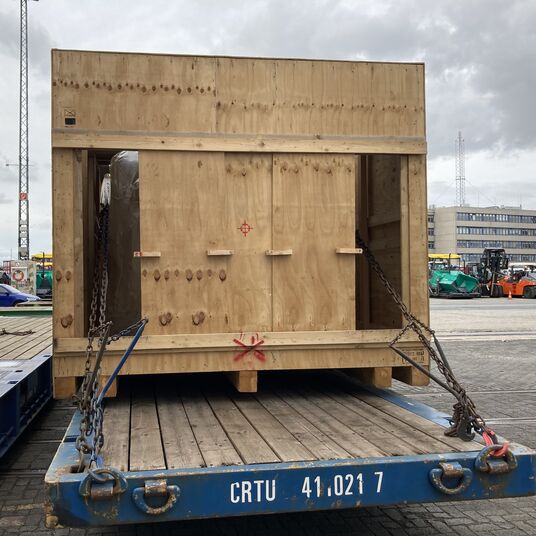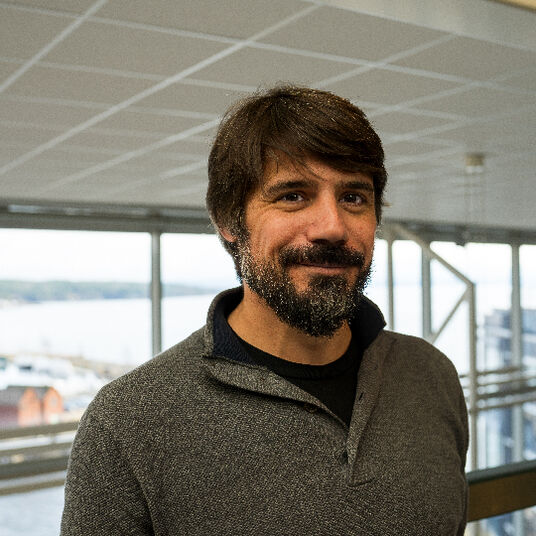How we put our safety first culture into practice
Our safety culture is embedded across all our sites and regions, from the shop floor to the boardroom. By placing such an emphasis on safety in our ways of working, we strive to uphold the quality of our services, minimize damages and eradicate inefficiencies.

Safety has always been ingrained in our mindset. At a time when global supply chain disruptions are causing bottlenecks, tonnage shortages and delays, doubling down on safety is a more important focus for us than ever – both to maintain our service levels as well as the health and wellbeing of our teams around the world working to keep products moving.
“Providing the policies, procedures and most importantly, focus and dedication to a safe workspace is an employer’s most important role. We view it as a moral imperative,” says Mike Hynekamp, COO logistics services. “People that work in our terminals, processing centers and offices have lives outside of the time they are with us, and their safety and health is our top priority. We must ensure everyone returns home safely every day.”
To achieve this, our safety culture is embedded at every level through communication, training and empowerment, explains Andrew Prior, senior manager, safety, quality and sustainability, Wallenius Wilhelmsen. Starting from the board all the way to site supervisors and production employees, our safety-first approach not only guides the way we work but improves it.

All employees are involved in the job safety analysis process
“This culture originates from the programs we’ve developed and honed over a number of years as the complexity and scope of our operations have grown globally,” adds Prior. “Most recently, we’ve leveraged the power of our digital environment to sharpen our focus and provide a foundation for easier information sharing as well as faster identification of trends and insights.”
Certainly, digital tools enable us to report any safety-related issues in real-time, but it’s our people who are first and foremost the champions of our safety initiatives. All employees are involved in the job safety analysis process to identify potential hazards. Their observations are then used to develop detailed safety plans for all tasks carried out at our facilities – from loading and unloading breakbulk products from our vessels to the customization work taking place at our processing centers.
Safety and quality go “hand-in-hand”
By emphasising the safety of our operations, we’re also helping to minimize the risk of damage to the products we handle.
“Doing things safely and right the first time avoids waste, prevents you having to do the same job again and most importantly, reduces our worker’s exposure to safety risks and incidents,” agrees Kim Buoy, senior vice president, logistics services, Oceania. “This raises morale and improves the overall quality of the work at hand. It also provides an understanding of the personal and global impact of poor quality outcomes.”
For Prior, a quality process is a safe process and vice versa, because you can’t have one without the other. “Safety and quality go hand-in-hand at all of our sites because of our mindset-driven culture. Not only does this promote safer working environments, but it also instils a culture of employees being able to report quality performance issues. Quality implies ‘attention to detail’ to ensure uniform outputs, so together quality and safety processes reduce variability and complacency.”
Our commitment to safety and quality is also apparent in the fact that many of our sites globally have received ISO 9001 certification, with several more, including our terminal in Southampton and our EPCs and Melbourne International RoRo and Auto Terminal (MIRRAT) in Australia, targeting to be ISO 45,001 certified for occupational health and safety within 2023.

Improving on-site safety helps minimize the risk of damage to products
Learning from our teams around the world
“At Wallenius Wilhelmsen we are proud of our safety standards and achievements to date, but we are never satisfied. There will always be more we can do to ensure our team members’ work experience is safe and satisfying, and we will continue to strive to make those improvements,” explains Hynekamp.
Regular safety meetings, Gemba walks and audits, plus “boots-on-the-ground leadership” are the backbone of our safety programs – as is communication, which enables us to continually learn from the experiences of our teams.
Our terminal in Southampton, UK, has become one such “testbed” for new ideas says David Hayden, health, safety, environment and quality manager for EMEA ports, terminals and stevedoring. One of the biggest success stories to date is a project to digitize the quality audit process to support active monitoring. “Rather than use checklists, members of the team can use their experience and knowledge to carry out audits, and information can then be entered via an app,” he explains. “Any member of staff can carry out a local audit or access that information as the results are published to a dashboard.”
The solution, which is due to be rolled out to teams in the US and Europe in the near future, is designed to make internal safety processes more streamlined, which has a trickle-down effect on customers, too. “If staff can perform their jobs to the best of their abilities that means they can be more efficient,” adds Hayden.

Our ambition is to have no injuries, waste or damage to products
Weekly safety meetings have helped many ideas like this to come to life. “Communication is the key,” says Scott Henson, operations supervisor at our VPC in Smyrna. “Each week we have a safety topics meeting, which is an opportunity to look at the plans and discuss them with the global team.”
As a result of these discussions, safety measures have been introduced in Smyrna, including installing lights on the steps for night shift visibility and a strobe light at the trucker’s entrance. “Job safety analyses are completed before any new project takes place so everyone is aware of any potential hazards,” adds Henson. “Good training and communication means we can deliver more units in a more efficient and timely manner.”
Safety in the current climate
The current climate has undoubtedly pushed the topics of safety and quality not only to the forefront of our organization but the world. Having a strong foundation of open communication, however, is helping us to weather these challenges.
“To aim for industry best in safety and quality is a tall task, but our goal and ambition is to always aim for zero – zero injuries, zero waste, zero damages,” reflects Buoy. “Our business and environment is constantly changing and we have to change with it. We don’t always get it right, and in some pockets, we have a job to do – but as long as we have the commitment, willingness and work hand-in-hand with all our stakeholders we believe we will achieve this.”

